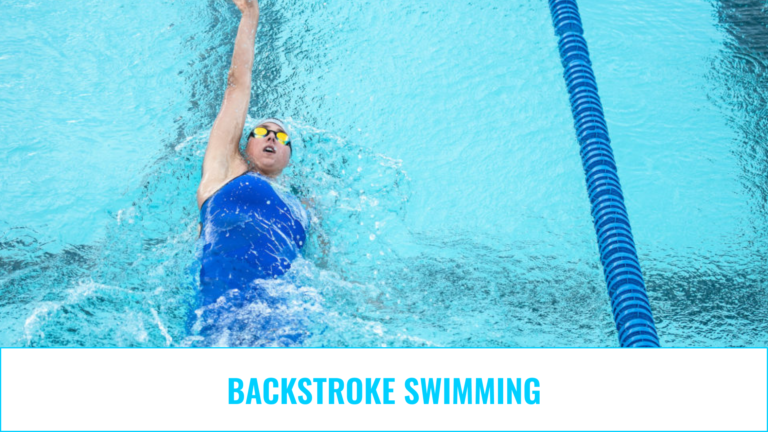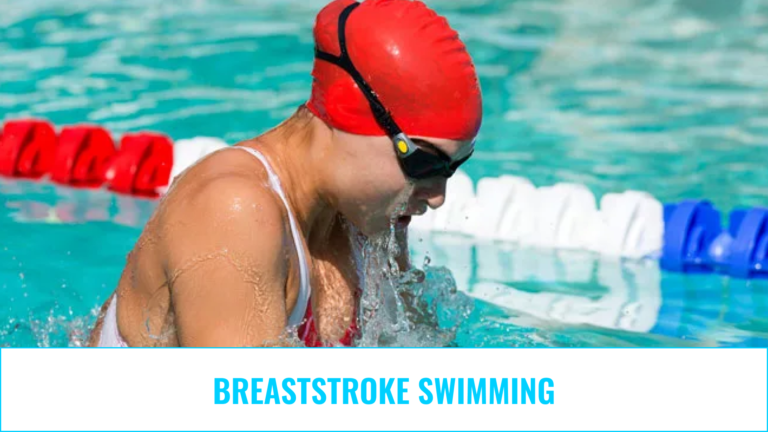How to Breathe in Butterfly Swimming Style (Butterfly Breathing Technique)
The butterfly swimming technique is one of the most powerful and fastest swimming techniques. When applied correctly, the butterfly technique increases swimming efficiency. Breath management is very important in butterfly swimming technique.
Proper breathing allows your muscles to get the oxygen they need, as well as allows you to perform every hit and kick with all your strength. If you are performing the butterfly swimming technique with improper breathing management, you will most likely experience a loss of efficiency.
So, what is proper breathing management? In this article, we will find the answer to this question.
How to swim butterfly?
Butterfly swimming style is a swimming technique that requires real power and rhythm. For the butterfly swimming technique to be perfect, it must be practiced a lot and repeated frequently. The butterfly swimming technique, which is applied correctly, is among the most preferred and admired swimming techniques.
Butterfly swimming can be divided into three arm movements pulling, pushing, and recovery. Swimmers who spread their arms shoulder-width apart must have their heads extended forward. With the palms facing outwards, you need to draw in a semicircle. The hands must be higher than the elbows while pulling the water.
After traction, the landing phase should be started. During the descent phase, the palms should be slightly turned and the hands should pass through the side of the body and continuously push the water towards the hips. In the last stage, the necessary thrust is gained in the recovery phase.
Dolphin strokes have a very important place in butterfly swimming. During the dolphin shot, both legs move at the same time and must be pressed with both legs to reduce the water pressure.
During the butterfly-style arm exercises, two dolphin strokes are performed. The dolphin strokes must be small during arm movements. When the recovery phase is passed, the dolphin hits are performed in a big way.
What Should Be Considered While Swimming Butterfly Style?
There are some elements to be considered in butterfly-style swimming. The most distinctive feature of the butterfly style is the dolphin leg strokes. Doing these leg kicks correctly will allow you to progress quickly. There are kicks called dolphins in the arms as well as in the legs. In the butterfly swimming style, care should be taken to throw the arms in the same way.
If butterfly swimming is performed professionally, you can have the opportunity to watch an aesthetic swimming style. In the butterfly swimming style, which creates a very aesthetic and visually elegant image, the head must enter the water before the arms are stretched. The most important feature that distinguishes the butterfly style from other swimming styles is at this stage. The head should enter the water without the arms extended and the butterfly-style swimming should be successful.
What are the Benefits of the Butterfly Swimming Style?
With the butterfly swimming style, you can improve physically and significantly reduce the discomfort caused by the spine. Thanks to the butterfly-style swimming technique, it significantly prevents diseases such as lumbar hernia, neck hernia, arthritis, shoulder pain, and back pain, which affect the skeletal system negatively, and contributes to the relief of pain.
The butterfly swimming style, which makes a great contribution to physical development, is one of the swimming methods that develop muscles. Butterfly-style swimming, which especially contributes to the developmental period of children, has an important place for both a pleasant and healthy life. Butterfly swimming also provides psychological support to people.
Remember that water has a relaxing effect. Thanks to the relaxing effect of the water, you will both learn swimming techniques and leave yourself to the calmness of the water. Butterfly-style swimming takes all the stress, tension, and fatigue you have experienced during the day.
While learning to swim butterfly style, you can experience the happiness of swimming. Slimming has a very important place among the benefits of the butterfly swimming style. Butterfly swimming style, which is an extremely difficult process, is among the most important swimming techniques in terms of both working the muscles and shaping your body.
Movements You Can Improve Your Butterfly Swimming Technique (Training Butterfly)
- Supine dolphin feet (in a streamlined position)
- Prone dolphin feet (in a streamlined position)
- 2 left, 2 right, 2 double-arm swimming
- 2 dolphins, 1 arm shot swim
- Biondi; 3-foot kicks are done with an arm pull. It is tried to ensure that the hands feel the water, arm, foot, and breath in harmony
- Free foot and butterfly arm workout
- Supine hands at side butterfly footwork
The Role of Breathing in Butterfly Swimming

Breathing in butterfly swimming is more than just inhaling and exhaling; it directly impacts stroke rhythm, efficiency, and energy conservation. Improper breathing can disrupt body alignment, causing drag and fatigue. Conversely, well-executed breathing synchronizes seamlessly with the stroke, enhancing propulsion and maintaining balance.
How to Breathe in Butterfly Swimming? Correct Breath Management in Butterfly Style
The ideal breath management in the butterfly style is to breathe every two strokes. During each arm cycle, you must raise your head once and then lie face down on the next stroke. This cycle allows you to breathe underwater.
The most important detail you need to know when breathing in a butterfly style is to breathe at the right moment. Breathing early can leave you breathless after a few seconds.
Below you can see how Michael Phelps breathes in butterfly style. If you stay down and breathe at the right moment, you will gain momentum and not cause friction. The time you pull forward is when you need to breathe.
Best Styles Of Butterfly Breathing Technique.
Traditional Breathing Technique
The traditional breathing technique in the butterfly swimming style is that the swimmer breathes out of the water. To practice the traditional breathing technique, it is necessary to come out of the water with the eyes facing forward and breathe as soon as the upper chest area is out of the water.
Down Angle Breathing Technique
The downward angle breathing technique, just like the traditional breathing technique, requires breathing as soon as the chin is out of the water. The main difference between the downward breathing technique and the traditional breathing technique is that in the downward breathing technique, as soon as you come out of the water, you must tilt your head down 30 degrees and breathe like that. This way, you can keep your hips lower. The downward-angle breathing technique is the fastest.
Common Mistakes and How to Avoid Them
Mistake 1: Holding Breath Too Long
Many swimmers delay breathing, leading to oxygen deprivation and fatigue. Always exhale fully underwater before taking the next breath.
Mistake 2: Excessive Head Lift
Lifting your head too high disrupts the streamlined body position and increases resistance. Instead, practice head lifts using minimal effort.
Mistake 3: Asynchronous Breathing
Inconsistent timing disrupts the stroke’s flow. Use video feedback to analyze your timing and adjust accordingly.
Summary
Breathing is among the most important components of the butterfly swimming style. With the right breathing and the right technique, it is possible to reach high speeds in butterfly style. The most important thing to remember is that the butterfly style is a style based on harmony, not speed. When you apply the technique with the right rhythm and the right breath management, you will achieve success.
How can I reduce water entering my mouth while breathing?
Ensure your exhalation is forceful and complete before lifting your head. This creates a natural barrier against water intrusion.
Is it better to breathe every stroke or alternate strokes?
This depends on your stamina. Alternate breathing helps conserve energy during longer swims.
Can beginners master butterfly breathing?
Yes, with proper drills and consistent practice, beginners can develop the necessary technique.
Why do I feel fatigued quickly when swimming butterfly?
This could be due to poor oxygen intake or inefficient stroke mechanics. Focus on synchronizing your breath with the arm movement.
Should I use equipment to improve breathing technique?
Using tools like snorkels or resistance bands during practice can enhance your focus on breathing mechanics.




